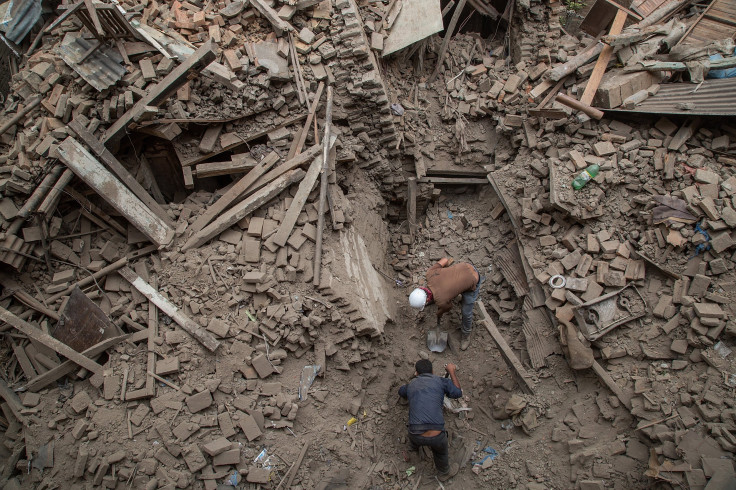Aftershocks, Power Outages Complicate Rescue Efforts Following Nepal Earthquake [VIDEOS]

Aftershocks and heavy rain have worsened an already terrible situation in Nepal, where an earthquake killed at least 2,430 people Saturday. Devastated residents and rescue workers began picking through the rubble in Kathmandu Sunday looking for survivors only to seek safety again when new earthquake tremors shook the city.
The ongoing aftershocks have made it dangerous for residents to take cover in the buildings still standing in Kathmandu. Rainfall doused the city, leaving the streets full of 1.2 million people who were disconsolate, soaking wet and without anywhere to go. Much of the mountainous country between India and Tibet is without electricity, complicating efforts for international aid coordinators.
“We're just gearing up,” Roger Hodgson, deputy country director in Nepal for the aid organization Save the Children, told the New York Times. “People have been resilient. But it's been difficult to get people and supplies into the country, especially to rural areas far from Kathmandu.”
Tremors continued to shake the city every few hours Sunday, while survivors burned the corpses of those killed in mass cremations. The threat of more building collapses forced even the most seriously injured to leave hospitals and try their luck in the streets. Stephen Groves, a Kathmandu resident, told the Times victims could be seen in the streets, some with intravenous drips still in their arms.
“The whole time I was thinking if the building next to me was going to come down on top of me,” Groves told the newspaper Sunday. “People here are in a panic, and every aftershock contributes to that. They are not going indoors. They are staying in the roads and open areas. Many are searching for family members.”
Yet the situation only seems to be on the verge of getting worse, with monsoon season expected to dump regular torrential downpours on the region.
© Copyright IBTimes 2025. All rights reserved.





















